Iran Arrests Journalist For Reporting On School Gas Attacks
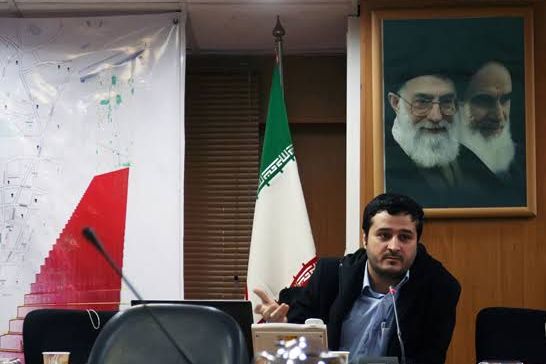
Iranian media say a journalist who had been following the news of gas attacks on girls’ schools in the religious city of Qom for the past few weeks, has been arrested.

Iranian media say a journalist who had been following the news of gas attacks on girls’ schools in the religious city of Qom for the past few weeks, has been arrested.
Ali Pour-Tabatabaie, who is one of the administrators of Qom News website was reportedly detained on Sunday morning in Qom 120 kilometers south of Tehran.
According to local media, including Etemad Daily, there is still no information about which security or intelligence outfit arrested the journalist.
Milad Alavi, a reporter at Shargh, wrote in a tweet that Pour-Tabatabaie was arrested on Sunday morning but "called his sister at around 8 pm to let her know about his detention". However, due to the sudden disconnection of the phone he was unable to explain the reason for his arrest.
His arrest drew reactions of several journalists and activists in the country, including Abbas Abdi, a reformist commentator, who wrote on Twitter that the arrest of Pour-Tabatabaie "not only does not help to clear up the ambiguity about poisonings, but also makes it worse."
About 80 more schools were targeted by chemical attacks on Sunday with dozens of girls hospitalized.
The gas attacks, targeting girls' schools since November, intensified this week with hundreds more girls falling sick across Iran.
It is believed that the attacks are a coordinated effort to deter the young students from supporting ongoing unrest, triggered by the death of Mahsa Amini.
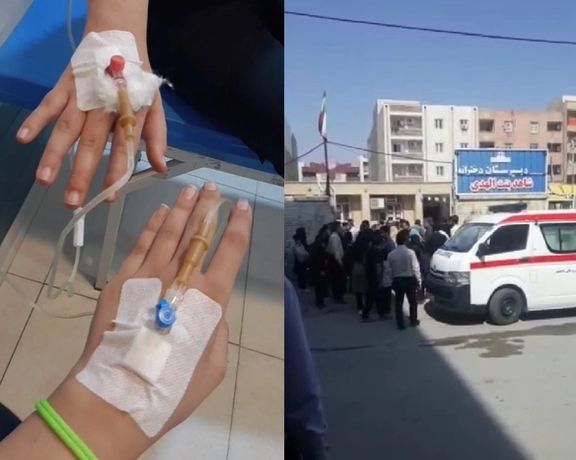
Iran's ruler Ali Khamenei said Monday that poisoning of schoolgirls in recent months is an "unforgivable" crime and denied any government role in the attacks.
"Authorities should seriously pursue the issue of students' poisoning. This is an unforgivable crime... the perpetrators of this crime should be severely punished," Ayatollah Ali Khamenei was quoted as saying by state media.
The first incidents of chemical attacks on girls’ schools began in November, but officials first ignored the incidents until they began to spread to several cities in February. Khamenei had so far remained silent while other officials were blaming foreign enemies and regime opponents without showing any proof.
Over a thousand Iranian girls in different schools have suffered "mild poison" attacks since November, according to state media and officials, with some politicians suggesting they could have been targeted by religious groups opposed to girls' education.
However, citizens and critics on social media ask why the government has failed to arrest the perpetrators of such a large and coordinated campaign, while it was efficient in killing and detaining antigovernment protesters.
Other say the hardliner establishment is behind the attacks to take revenge from schoolgirls who joined the Woman, Life, Freedom protests in October and November.
The spreading attacks that started in the holy Shi'ite Muslim city of Qom in central Iran have spread to at least 25 of Iran's 31 provinces, prompting some parents to take their children out of school and hold protests against the establishment.

Iran's Parliament sunk into commotion Sunday as a lawmaker tried to stop another one from voicing his constituents’ anger over the so-called ‘chain’ school poisonings.
During a session for examining next year’s budget bill, Seyed Ghani Nazari, the representative of Khalkhal in northwestern Ardabil Province, used his time to speak about his constituents’ anger over the poisoning of schoolgirls in his district.
An ultra-hardliner member of the National Security and Foreign Policy Committee, Javad Karimi Ghodousi, who was standing behind Nazari, kept interrupting him while other lawmakers also shouted to drown his voice. Speaker Mohammad-Bagher Ghalibaf also intervened, asking Nazari to only speak about the budget bill.
“Mr Ghalibaf, what do you expect me to talk about when students were hospitalized in Khalkhal? It’s my duty to demand the government and responsible bodies to investigate. My phone has been ringing since morning and people are asking me to pursue the matter,” Nazari said as other lawmakers joined in the dispute, shouting and gathering around Nazari.
Ghodousi later alleged that those who speak about the poisoning incidents could be “adding fuel to the enemy’s fire”.
The parliament has established a working group to investigate the incidents of mysterious poisonous gas attacks on girls’ schools that have now spread to around 100 cities.

Poisoning of students was reported in at least 80 more schools across the country Sunday.
Hardliners and government officials are increasingly attributing the gas attacks to “students’ pranks” or “enemies of the Islamic Republic”.
Authorities have yet not offered any report on the incidents or on findings based on samples taken from over 1,500 students who have been hospitalized since the first incident took place in the religious city of Qom on November 30.
The ultra-hardliner Kayhan newspaper whose chief editor Hossein Shariatmadari is an appointee of the Supreme Leader Ali Khamenei on Saturday claimed that opposition groups such as the Mujahedin-e Khalq Organization (MEK) have been perpetrating the attacks on behalf of foreign enemies and casting the blame on religious groups in Iran or the government.
“It’s worthy of note that certain western governments and intelligence services have a long history of committing crimes and blaming others for them including the chemical attacks by their Sunni extremist mercenary groups in Syria for which they blamed the Syrian government. The CIA and Mossad have committed many acts of biological terror,” Kayhan wrote.
However, such claims are countered by citizens that how the ‘enemy’ is able to conduct such widespread attacks if the government has control over the country.
The IRGC-linked Fars News Agency on Sunday claimed that experts believe pranks by teenage students or “mass phobia” are the most likely explanations for the mysterious poisonings.
Given the highly synchronized nature of the attacks, many in Iran accuse the government of having a direct role in the poisoning of schoolgirls, as revenge for their rejection of the hijab and their active role in the Woman, Life, Freedom protests in the past few months. Even if some fundamentalist groups are behind the chemical attacks the government stands accused of covering up their crime.
“People from inside the system must be collaborating with the perpetrators,” wrote Abbas Akhoundi, a roads and urban development minister in Hassan Rouhani’s government, in Shargh newspaper Saturday.
Some medical experts such as Dr. Mohammadreza Hashemian, an official of Masih Daneshvari Hospital in Tehran where many of the victims have been treated, have pointed out that the gases suspected of being used by the attackers seem to be composed of various chemicals that are not accessible to ordinary people.

Iran’s national currency, rial, bounced back Sunday, regaining some of its recently lost ground following a visit by the UN nuclear watchdog, IAEA head Rafael Grossi.
Last Sunday the rial had dropped to 600.000 against the US dollar, but exactly a week later it stood at a little over 500,000 on March 4, probably over hopes that the Islamic Republic would opt for closer cooperation with the International Atomic Energy Agency, and what some in Iran hope would lead to a resumption of talks with the United States.
Despite the rebound, the rial is still down 100 percent since President Ebrahim Raisi took office in August 2021, as Iran suffers from both lack of oil export income and a crisis in its domestic economy. Although the rial might rise some more but it is a fundamentally weak currency as long as Iran has not reached a new nuclear agreement with the West and sanctions remain in place.
Kamran Soltanizadeh, the head of the Iranian Exchangers Association, also mentioned another factor Sunday. He said that the Central Bank of Iran's decision on Saturday to allow exchange offices to buy foreign currencies gained from exports of petrochemicals and minerals helped the rise of the rial against the dollar. He predicted that the rial would further rebound in the following days over the decision.
Rials long decline since early 2018 is to a large extent the result of US sanctions the former US President Donald Trump imposed when he withdrew from the 2015 nuclear deal with Iran. At that time the US dollar was at 35,000 rials and steadily began to rise, ultimately reaching 600,000 last week.
Since November, the US has tightened regulations on dollar transfers by Iraqi banks, from where Iran was smuggling some currency helping it to keep the rial relatively stable. This action further weakened the Iranian currency.
Iraq, whose official trade exchange with Iran amounts to approximately $14 billion a year, has struggled to pay Tehran for its imports of natural gas and electricity due to the US sanctions. Apparently, it decided to pay Iran in Iraqi dinars, which is not a fungible currency except in Iraq itself, and Iran began buying US dollars there and repatriating it. This caused a dollar shortage in Iraq since December and the dinar lost some value.
Ali Shariati, a member of the Iran-Iraq Chamber of Commerce and a businessman, said that when the Islamic Republic is unable to receive its money in dollars, it would be a win to be able to receive the funds in dinars. The Central Bank of Iraq is in control of payments in dinar, but according to the recent negotiations the US is sensitive about its dollars, so Iraq may have paid the Islamic Republic in dinars to avoid strict regulatory sensitivities, he added. He said that the Islamic Republic is not in a situation to choose currencies as one of the reasons behind the jump in the dollar rate was the interruption of the inflow of foreign currency from Iraq.
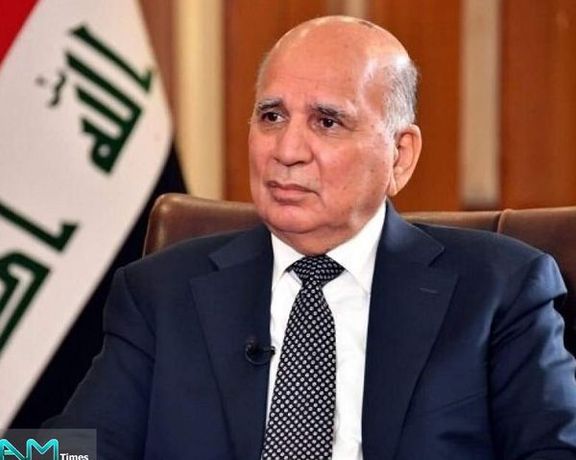
In February, Deputy Prime Minister and Foreign Minister of Iraq, Fuad Hussein accompanied by Central Bank of Iraq Governor Ali al-Allaq met with both the State Department and with Treasury to discuss a host of economic issues, but an urgent issue was how to prevent Iran from using Iraq’s banking ties with the United States to launder US dollars and circumvent Washington’s sanctions.
Iran claims its exports to Iraq are on the rise approaching $10 billion despite pressure by the United States on Baghdad to stop money smuggling from the Arab country to Iran.
Local media also said that what began to help the rial was intervention by the Central Bank of Iran when it injected $700 million in UAE dirhams last Sunday, February 26, into the Tehran’s foreign currency market and the rial began to rise from its all-time low of 600,000 against the US dollar.
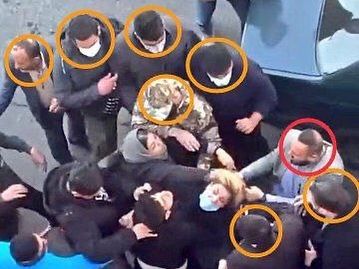
The public is demanding answers after distraught parents of poisoned schoolgirls in Iran were brutally attacked by plainclothes security forces in recent days.
After public outrage and criticism even by some regime loyalists, four men accused of viciously beating a woman in Tehransar were arrested.
Video footage of the attack on the mother outside a girls’ school near the capital Tehran on Wednesday went viral, with demands for answers flooding social media.
The police have denied any involvement in the incident which saw several men surrounding and assaulting the woman who was apparently accusing the government of responsibility for the attacks. One of the men who dragged the woman by the hair has been identified as a Basij militia official by social media users.
It is often difficult to differentiate plainclothes agents from Basij militiamen or members of the public. Plainclothes forces who could be affiliated with any of the many intelligence and military organizations have often been seen working in tandem with pro-government vigilantes, beating and arresting protesters, and even destroying people’s vehicles and breaking shop windows.
Another video posted on social media on Saturday shows plainclothes forces violently arresting two schoolgirls in Karaj, forcing them into a car before driving them away.
While speculation grows as to the perpetrators of the poisonings in the girls’ schools, which began in the religious city of Qom in November and has now reached scores of schools around the country, even ministers have pointed the finger towards the government.
Last week, deputy education minister Younes Panahi said that "It was found that some people wanted all schools, especially girls' schools, to be closed," confirming fears that the regime is cracking down on girls who have been at the forefront of the Women, Life, Freedom movement since September.
"It has been revealed that the chemical compounds used to poison students are not war chemicals, and the poisoned students do not need aggressive treatment, and a large percentage of the chemical agents used are treatable," he told a press conference.
The five months of protests, sparked by the death in custody of Mahsa Amini in September, arrested by the morality police for not wearing her headscarf appropriately, has been supported nationally by schools, images being shared of girls burning pictures of the Supreme Leader, burning headscarves and cutting their hair.
Parents have staged rallies outside education departments in several Iranian cities in protest of the authorities’ failure to address the poisoning attacks. A number of the protesters were reportedly arrested by security forces.
Investigations to find the attacker of the woman outside the school is difficult due to the existence of numerous and parallel organizations, Mohsen Borhani, a criminologist and professor of law at Tehran University said in a tweet after the police’s claim that the man beating the woman outside the school was not one of theirs: “Woe to the nation who does not know which organization is responsible for beating it up!”
In another tweet, Borhani told the authorities that had they not prevented people from taking videos during protests, or forcing owners of CCTVs to delete their footage of the protest, hundreds responsible for attacks similar to the one on the woman outside the Tehransar school would have been identified. He added that authorities did not truly wish to prevent such acts of aggression against the public.
During recent unrest, protesters often noticed certain clothing items and accessories such as baseball caps or crossbody sling bags and shirt tails draped over their trousers or even two watches, one on each wrist, to allow them recognize each other from others on the scene. In one case a protester reported that plainclothes forces were all wearing red t-shirts that day.
In an interview with the Iranian Labour News Agency (ILNA) on January 8, interior Minister Ahmad Vahidi denied that there were any plainclothes forces on the ground and claimed all security forces dealing with protesters were uniformed.
However, protesters claimed plainclothes forces who often moved in groups of four, riding on two motorbikes and carrying teasers and walkie-talkies, even openly carried weapons. In one of the videos from a university in Tehran in November, a plainclothes agent is seen drawing a gun from his sling bag and taking a shot.
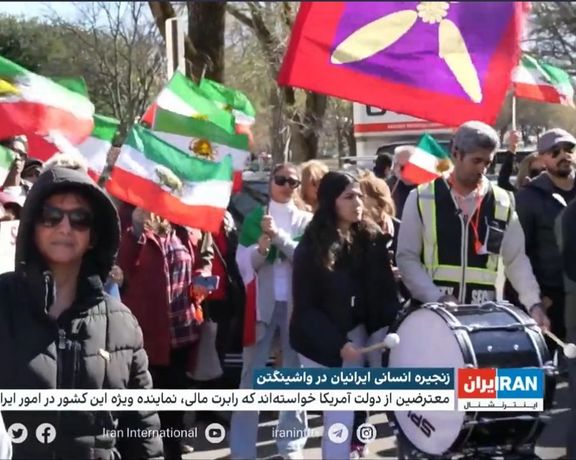
A group of Iranian expatriates have held a protest outside the office of US Special Envoy on Iran, Robert Malley, in Washington DC to call for his dismissal.
Tens of Iranians gathered for the rally on Saturday in front of Malley’s office calling on the Biden administration for his dismissal.
Malley has been under fire for his soft approach in dealing with the Iranian regime in the past months and is one of those blamed for the breakdown in nuclear talks last year.
Back in October, he stated in a tweet that Iranians were protesting to have the Islamic Republic “respect their human rights and dignity,” a statement Iranians refuted, claiming he undermined the wider message that Iranians want a new, democratic government and not respect from an oppressive regime.
Iranians feel Malley is out of touch with the needs of Iranians and do not trust his hand in taking the nuclear talks to the next level. "He underestimates the levels the regime will go to," said one protester who asked not to be named. "He has no idea what living under this oppression is like."
Protesters plan to hold weekly events outside the State Department to demand Malley's dismissal.
Another participant told Iran International that such events show the helplessness Iranians in the diaspora feel, unable to express their anger with the regime and its brutal crackdown on innocent civilians exercising their right to protest.
After his tweet in October, New-York based activist Masih Alinejad, demanded Malley resign. “By continually misrepresenting Iranian’s rejection of Islamic Republic, he is hurting the US administration standing among the people of Iran.,” Alinejad said.
In response to the criticism, Malley told Iran International at the time: “Neither I nor the US government can claim to speak for protesters. Only they can do that, and I’d never intend to imply otherwise.”